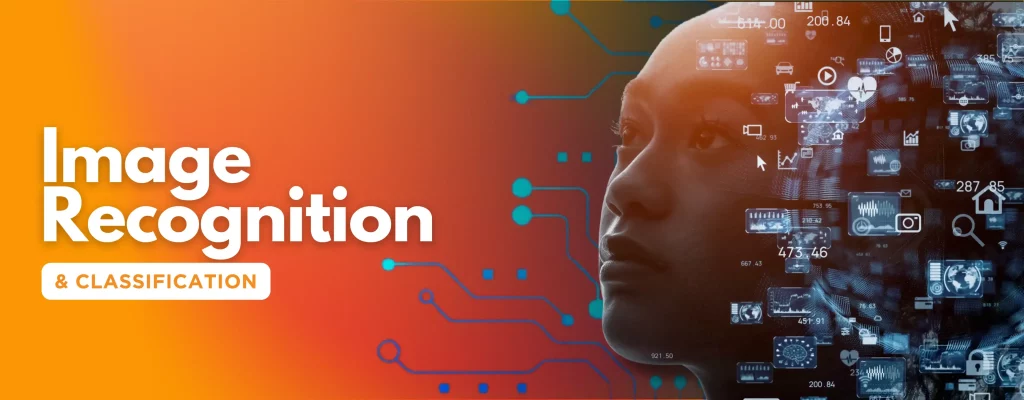Today, uploading and sharing images on social media, dating apps, and even e-commerce websites has become the norm. Although visual content plays a significant role in how users interact in the digital world, it also birthed pressing challenges. Fortunately, image moderation is just around the corner to help.
Due to the exponential growth of user-generated photos across online platforms, image moderation has become a demanding task. Manual reviewing of photos before uploading is also time-consuming and impractical.
However, as we usher in the era of artificial intelligence (AI), we can use AI tools and technologies to streamline the image moderation process. An AI-based image moderation system can efficiently moderate vast online images, ensuring online safety.
Understanding AI-Based Image Moderation

Integrating AI in image content moderation is an efficient strategy to regulate the vast amounts of harmful images online. It offers a scalable solution to handle the influx and diversity of online images. It automatically screens all incoming user-submitted photos for compliance.
Unlike manual moderation, an AI image moderation system can detect and remove unwanted images in real-time. This optimizes manual image moderation, lessening the burden of human moderators. It also guarantees accurate and consistent moderation outcomes because AI systems are trained with large datasets to understand contextual information.
Additionally, AI is an adaptive and agile solution that can be continuously trained to deal with emerging threats and identify harmful content generated from advanced image manipulation techniques.
However, despite these advantages, AI should not be a standalone solution to combat image moderation challenges. Human moderators should remain at the forefront of the process, especially in cases requiring more qualitative judgment.
Image Recognition and Classification

Automatic image moderation was made possible through AI tools and computer vision. AI tools, such as machine learning algorithms, recognize elements within an image and assess whether they are safe.
Meanwhile, computer vision is an advanced method of moderating images with utmost precision. It employs an object detection feature that identifies common objects that violate platform policies, such as drugs, guns, and weapons. It also classifies brand logos and symbols associated with terrorist groups or propaganda.
Using vision-based search techniques, the specific location of the harmful content within an image can be detected. Based on predefined criteria, the image can then be classified as explicit content.
In general, there are four categories for classifying harmful images on platforms:
Nudity
This category involves images that portray explicit or implicit nudity.
Suggestive
This category includes images that may not contain sexually explicit content but are suggestive in principle, causing sexual arousal.
Violence
This category refers to images depicting violence, including fistfights, riots, domestic abuse, gun violence, and wars.
Disturbing
This category includes images that are disturbing in nature, including self-harm or suicide.
Natural Language Processing for Textual Context

Natural language processing (NLP) is used alongside computer vision to analyze textual context associated with images. It detects and analyzes texts within an image to be read and converted into machine-readable format. The extracted texts are further classified as offensive, hateful, discriminating, or threatening.
Unlike simple keyword matching, NLP uses machine learning models trained using labeled and annotated datasets. Thus, it can understand the relationship between words, contexts, and their changing meanings.
For example, an AI-based image moderation system using context-aware NLP won’t flag the phrase “Killing it!” since it is an expression used when a person conquers a challenging task or situation.
Machine Learning and Continuous Improvement

Improving image moderation solutions using AI is a continuous journey. AI moderation system utilizes machine learning models, which are capable of learning and developing through experience.
Through constant data training, AI algorithms analyze large amounts of visual data. As algorithms undergo more data training, they improve their accuracy and performance in general.
The continuous learning process involves a series of steps, as listed below:
Initial Training
The first process is to train the machine learning model on an initial annotated dataset. The model will start learning the parameters by identifying patterns in the analyzed data.
Deployment
The trained model will then perform its intended task—reviewing and moderating images. As the model receives new data, it determines new insights and patterns relevant to the image moderation process.
Data Rehearsal
To maintain consistency, it’s essential to continuously rehearse past data while still being trained on new datasets. This way, the system can retain previously learned information and apply it routinely to different moderation cases.
Continuous Learning Strategy
A continuous learning strategy should be implemented based on new streams of data. This allows the system to adapt to emerging forms of harmful content found in images and make better moderation judgment calls.
Evaluation and Monitoring
Through the supervision of human moderators, the model’s performance can be evaluated in terms of accuracy and recurrent biases. This is a crucial step in maintaining the credibility of the system’s output.
Real-Time Moderation and Scalability

A staggering 3.2 billion photos are uploaded to the internet every day. Thus, images must be moderated in real time to reduce the risk of online users' exposure to unwanted and inappropriate photos.
But how can we do that?
An image moderation service that leverages AI solutions offers real-time moderation that quickly responds to new content uploads. It categorizes images and automatically flags them for violations before or after the user publishes them.
Moreover, an AI-based image moderation system is a scalable method for moderating hundreds and thousands of visual data, which is an impossible feat for human moderators.
Undeniably, AI has leveled up the image moderation process by providing speed and scalability. Here’s a quick rundown of methods and components that AI systems employ to automate image moderation efficiently:
Cloud-Based Solutions
An AI image moderation model hosted on a cloud computing platform can be scaled up or down depending on demand, allowing platforms to dynamically adjust their resources without added costs. This flexibility and scalability are beneficial for online platforms that require processing data in real-time, such as social media.
Distributed Computing
Distributed computing frameworks allow AI systems to distribute moderation tasks across multiple servers or nodes rather than forcing a central device to single-handedly carry the load.
Parallel Processing
Parallel processing optimizes AI algorithms. In conjunction with distributed computing features, this technique divides moderation tasks between multiple processing units simultaneously, enhancing the speed and efficiency of image moderation.
Auto-Scaling Infrastructure
By integrating auto-scaling capabilities into an AI image moderation system, it can automatically adjust to fluctuating volumes of images that need moderation. This ensures that the system can effectively operate during peak periods without compromising speed.
Challenges and Ethical Considerations

AI tools have undoubtedly shaped the way users see content online. Throughout the years, we’ve seen how it revolutionized content moderation, guaranteeing a safer user experience.
While AI technologies are a viable solution, they are still bound by limitations that may cause unwanted disruption in the balance of our digital ecosystems.
Some of the challenges when using AI-based image moderation include the following:
Potential for Biases
Data training is fundamental in AI image moderation. If the datasets used during initial training are unrepresentative of certain ethnicities, religions, and cultures, image recognition algorithms can misclassify images. This can lead to misrepresented or underrepresented groups.
This is why addressing potential biases at the onset of AI integration is essential to prevent censorship and promote diversity of ideas.
Lack of Transparency and Accountability
One of the main concerns in AI image moderation is the lack of transparency and accountability in the algorithm’s overall decision-making. There is limited information about the datasets on which the algorithm is trained, how the system identifies data correlations, and how reliable the results are.
To address this, platforms should regularly publish a transparency report regarding their image moderation practices.
Evolving Image Manipulation Techniques
The prevalence and continuous evolution of image manipulation tools and technologies have led to several repercussions, including distorted research findings, compromised research integrity, misinformation, and damaged reputations of scholars and institutions.
Similarly, the emergence of deepfake images made through deep learning technology also poses a risk to user safety when they are used for ill purposes.
To curb its damage, continuous improvement of AI models is crucial for identifying new patterns that make it easier to detect manipulated images.
Ethical Considerations
AI-powered image moderation raises ethical concerns, including privacy and the balance between free speech and responsibility.
Contextual analysis using AI may require extracting sensitive information from images uploaded to the system. However, it’s not clear how the system stores and processes data, which can cause privacy concerns.
In addition, AI image content moderation brings about issues regarding violating free speech. This is why pinpointing the difference between content moderation and censorship is important. The former focuses on removing harmful content to abide by community guidelines, while the latter deliberately suppresses ideas and information to protect the interests of those in power.
Harnessing AI for Safer Image Sharing in Digital Spaces

In the era of rampant online image sharing, the task of moderation has transcended human capability. To revolutionize this process, AI-based image moderation was developed. AI-based moderation solutions identify and remove harmful visual content in real-time, ensuring a positive and safe online experience.
Through image recognition and classification, AI precisely distinguishes between explicit, suggestive, violent, and disturbing content. NLP complements this process by analyzing textual context, adding depth to moderation decisions.
Continuous learning mechanisms enable AI to adapt to evolving threats, ensuring consistent effectiveness. At the same time, real-time moderation and scalable technological infrastructure address the challenges posed by the ocean of content flooding digital platforms.
However, algorithmic biases, lack of transparency, evolving image manipulation techniques, and ethical considerations loom large. As such, striking a balance between content moderation and free speech is imperative.
If you want to embark on a journey toward safer, more inclusive digital spaces, Chekkee can provide you with the appropriate image moderation solutions. By integrating technological innovation with ethical consciousness, we pave the way for a harmonious online ecosystem.Keep your platforms safe from harmful images. Contact us today to learn more!


